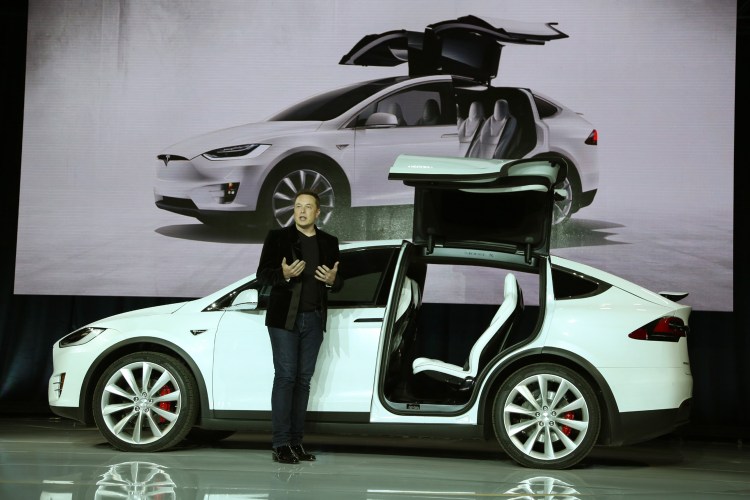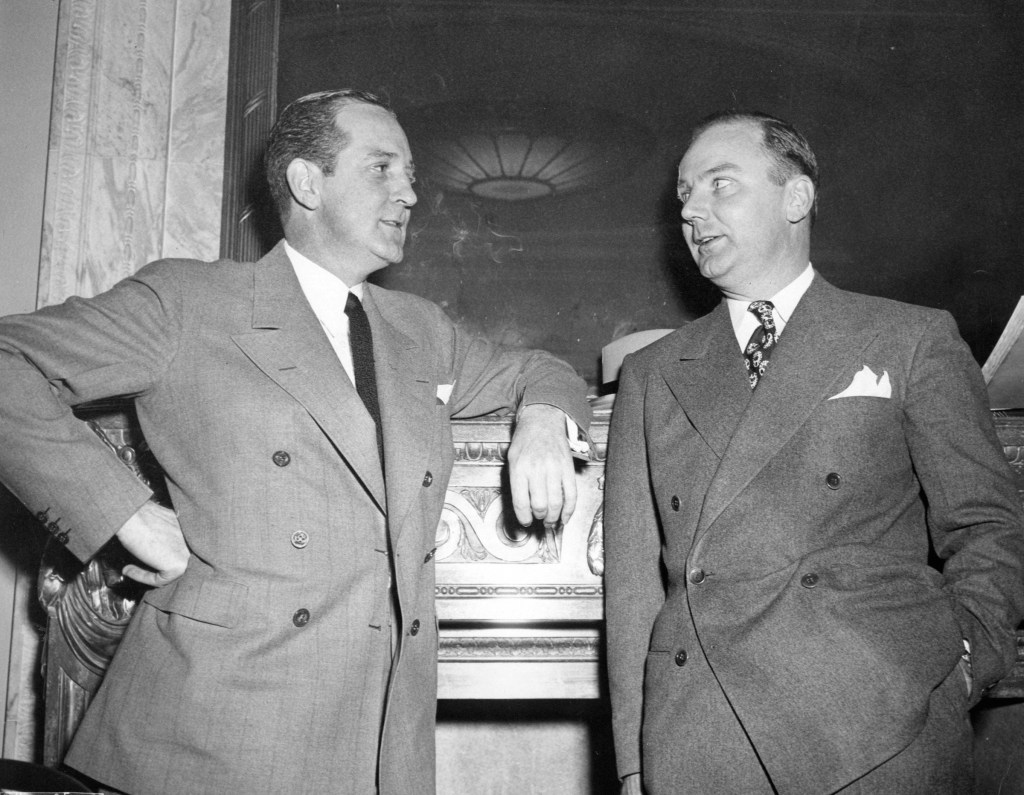Starting an auto company is near-impossible – just ask Fisker, Coda and DeLorean. Making inroads into a near-trillion-dollar industry seems more possible if it includes a futuristic fastback sedan produced by an automotive P.T. Barnum hellbent on disrupting the industry.
This unlikely tale could be about Tesla … or Tucker.
For 1948, Preston Tucker promised a car that would cruise at 100 mph, get 65 mpg and innovate with a rear-mounted engine, fluid drive semi-automatic transmission and adaptive third-eye headlight.
“Preston Tucker became a household name,” said Steve Lehto, author of “Preston Tucker and His Battle to Build the Car of Tomorrow.” “People fell in love with the idea – a guy who will build a car that is different and remarkable.”
This could describe Elon Musk, co-founder and CEO of Tesla, whose goal is to bring electric cars with uncompromising style and performance to the masses, along with a 300-mile range.
“Tesla’s really doing a good job of creating evangelists for their brand,” said Jessica Caldwell, senior analyst at Edmunds.com. “They came out with an electric car and made it cool. When they announced the Model 3, people waited in line. They have a very determined CEO who says outlandish things, but accomplishes things out of the norm.”
The production ’48 Tucker, designed by Alex Tremulis, featured futuristic fastback styling, doors wrapped into the roof and a center headlamp that would follow the curves in the road, much like today’s adaptive headlights. A pop-out windshield enhanced safety.
The car employed a rear-mounted helicopter engine to run 0-60 mph in 10 seconds and reach a top speed of 120 mph – blistering for 1948. It cost $2,500 ($25,000 today), but Tuckers sell for up to $3 million today.
By comparison, Tesla has built three cars off two platforms, including the discontinued Lotus-based Roadster.
The Tesla Model S is an electric performance sedan available with all-wheel-drive. The top-of-the line P90D uses a dual motor setup powering each axle to toast 0-60 mph in 2.5 seconds or travel up to 302 miles per charge.
Like Tucker, it has adaptive headlamps and a somewhat fastback style. Prices range $66,000 to $134,500. The S-based Model X crossover flaunts rear “falcon-wing doors”, the ability to run 0-60 mph in 2.9 seconds, or travel 289 miles per charge. Prices range $76,500-135,500.
Bringing Tesla to the masses in the near future is the $35,000 Model 3 with a 215-mile range.
Tucker Car Co. and Tesla Motors both have had problems.
After high-profile Model S fires in late 2013 caused by debris puncturing the battery pack, Tesla added titanium shields and increased highway ride height via an over-the-air software update. Other fires were linked to battery chargers, but there’s no evidence electric cars ignite more often than gasoline vehicles.
Tesla’s Autopilot, which steers within a lane, changes lanes automatically and dynamically manages speed, came under scrutiny when a Chinese driver died in January and an American fatally crashed his Model S into a semi this May. Musk announced software upgrades that rely more on radar than cameras and require the driver to keep hands on the wheel.
“Perfect safety is an impossible goal,” Musk said during the news conference. “We are increasing the probability of safety.”
Undaunted, Musk announced last month that every new Tesla car will be equipped with hardware for fully autonomous driving, which may be ready for real-world testing as early as 2017.
Tucker too preached better safety than industry standards.
The loudest knock against Tesla is missing lofty production targets and notorious delays in the rollout of new cars. The complex double-hinged falcon wing doors on the Model X caused it to be delayed two years, then was recalled shortly thereafter in 2016 to replace the third-row seat.
Now the release date of the Model 3 is bumped back from late 2017 to early 2018. The demand exceeded Tesla expectations – and capacity.
Tesla has more than 375,000 reservations for the Model 3, with each intender plunking down $1,000.
“Tesla’s challenge is making cars, especially as it goes towards the Model 3,” Caldwell said. “Hopefully, the Model 3 will be profitable. Their goal of 500,000 cars per year by 2018 is pretty ambitious. Through July, they’ve sold 67,000 vehicles since 2012. The Model X sold 5,000 units in the first nine months.”
Tesla’s automotive operations bleed cash, but keep raising capital from investors who either suspend reason or believe Musk’s bet will pay off. Tooling the former Toyota-GM NUMMI plant in Fremont, Calif., and engineering multiple electric cars will cost Tesla.
A story published by Fortune.com in May announced Tesla raised $1.46 billion by selling stock. Tesla gave guidance it will sell up to $1.7 billion in new shares as part of $2.25 billion needed to produce the mainstream Model 3.
Tucker too rode a wave of positive postwar publicity to get customers to want to buy a car yet to be made. Dealerships, distributors and dollars followed.
In today’s dollars, Tucker raised more than $200 million, mostly spent initiating his Chicago factory. If Tesla is any indication, he was woefully underfunded.
Lehto offers a lesson from Tucker: “Is Tesla doing it on too large of a scale? It was a criticism of Tucker, who went out and got the largest factory in the world. How long can you expect investors to stay for a ride? We don’t know yet; Tesla and Musk are in uncharted territory.”
Send questions/comments to the editors.




Success. Please wait for the page to reload. If the page does not reload within 5 seconds, please refresh the page.
Enter your email and password to access comments.
Hi, to comment on stories you must . This profile is in addition to your subscription and website login.
Already have a commenting profile? .
Invalid username/password.
Please check your email to confirm and complete your registration.
Only subscribers are eligible to post comments. Please subscribe or login first for digital access. Here’s why.
Use the form below to reset your password. When you've submitted your account email, we will send an email with a reset code.